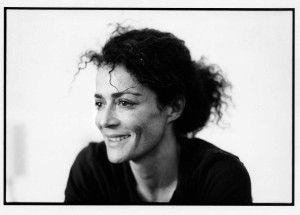
As a designer, Cella felt Cooper was easy to work with because he knew what he wanted, but was also a great listener. He was able to include what his collaborators brought to his vision in “a very organic way.”
“Not all directors know how to use their collaborators. He gave his collaborators freedom within the things he wanted to do. He’s not afraid to work all together and is not held in by ego,” said Cella. “He knows how to get the best out of you, one of the most important qualities for a director. He makes you feel like you are really contributing, so you are excited to give him more.”
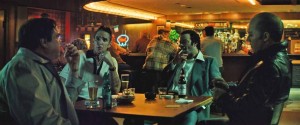
Scouting together in Boston, they came up with a look that was “realistic and very loyal to the time, but with a slight arrogance that was brought in by camera frames and lighting,” Cella added. “It was very organic and one of the best experiences I ever had.”
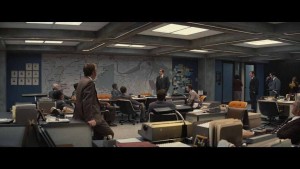 The starting point of the design was a cement-based architectural style that was prevalent in Boston during the 1970s. The city hall and business district were built during this period. The FBI headquarters are located in the area.
The starting point of the design was a cement-based architectural style that was prevalent in Boston during the 1970s. The city hall and business district were built during this period. The FBI headquarters are located in the area.
“I wanted the FBI to be concrete with cold surfaces and cool colors. The FBI scenes are cooler and cold with a cement kind of color palette,” explained Cella. “The Old Southie – the Whitey Bulger world and the streets world – I wanted warmer… brown and orange and muddy green. All Southie is patterned, wallpapers and textures, while the FBI is like a prison. We wanted to support the story about what was going on inside those walls.”
The set of Bulger’s mother’s house had a layer of texture and color in the warm palette used for Southie during the ’70s. The warmer, more accessible approach to Bulger’s neighborhood supported the director’s idea that he wanted to do a movie about human beings that happened to be criminals.
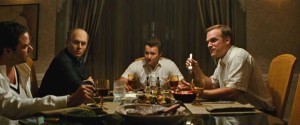 The production designer had to work with a city in 2014 while a city circa 1974 through the late 1980s was needed for the story. “How are you going to deal with technology and gentrified neighborhoods? The challenge is to make it look real and not fictional,” said Cella. “CGI is barely involved. In the helicopter shot and in the view from the port, we canceled some skyscrapers that were built later. Everything else is in camera.”
The production designer had to work with a city in 2014 while a city circa 1974 through the late 1980s was needed for the story. “How are you going to deal with technology and gentrified neighborhoods? The challenge is to make it look real and not fictional,” said Cella. “CGI is barely involved. In the helicopter shot and in the view from the port, we canceled some skyscrapers that were built later. Everything else is in camera.”
With 160 sets, some of which did not make the final cut, the production had a very extensive art department. Using the actual locations where Bulger had killed people added difficulty to the shoot, but fortunately the city and people of Boston, including the FBI, were extremely collaborative with the filmmakers.
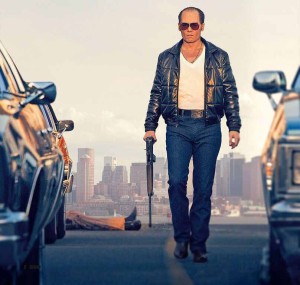 Exteriors posed the biggest challenge. The art department had to change the lighting on entire streets since currently everything is LED, which is white, while during the time frame of the film, streets would have had vaporized lighting that cast an orange tint. The design team took over a full two blocks and re-dressed the entire area to make it look like Boston in the ’70s.
Exteriors posed the biggest challenge. The art department had to change the lighting on entire streets since currently everything is LED, which is white, while during the time frame of the film, streets would have had vaporized lighting that cast an orange tint. The design team took over a full two blocks and re-dressed the entire area to make it look like Boston in the ’70s.
“It was a fantastic experience collaboration-wise between costume (Kasia Walicka-Maimone) and Masa (cinematographer Masa Takayanagi) and Scott. I think you can see on the screen how we really worked together.” Even though the film takes place during the ’70s and ’80s, Cello concluded, “I personally wanted to do something timeless. The story is what I work for.”





